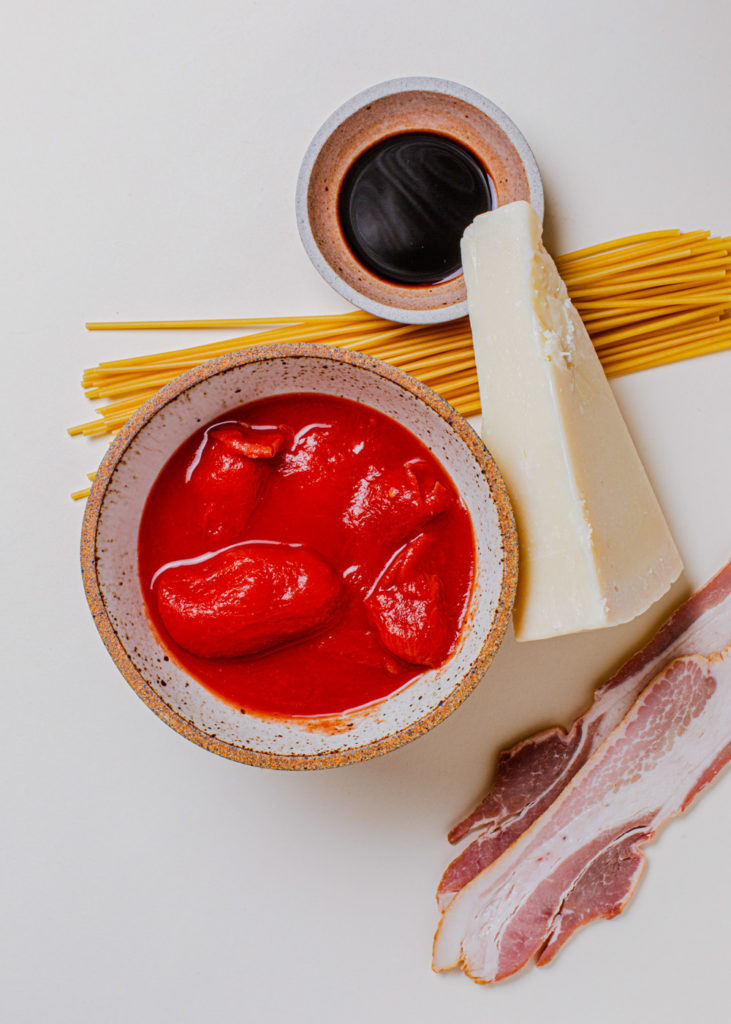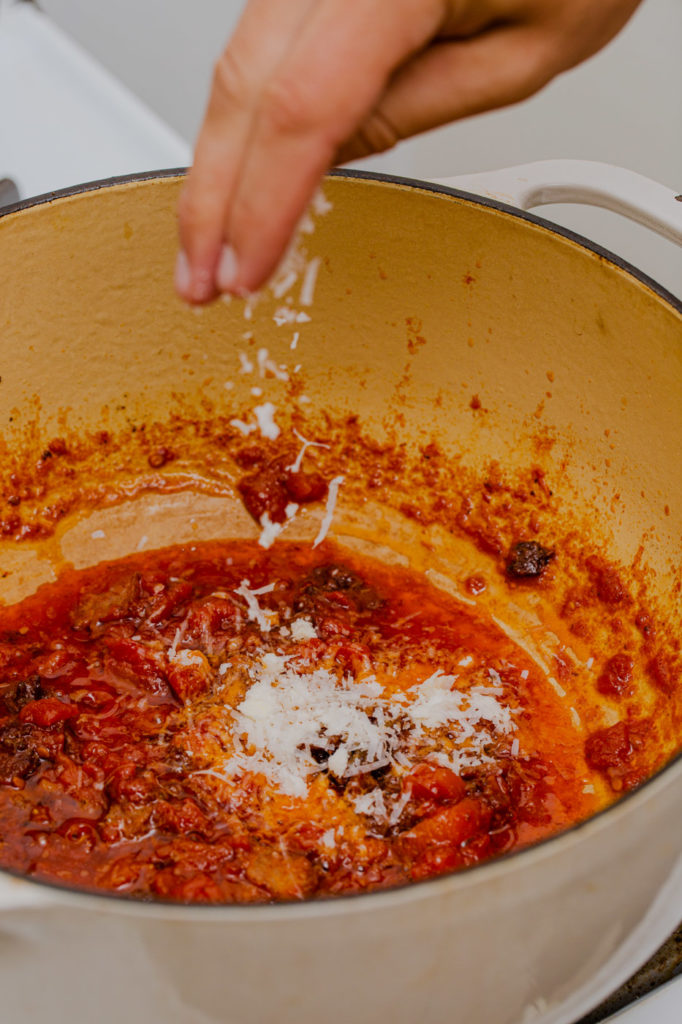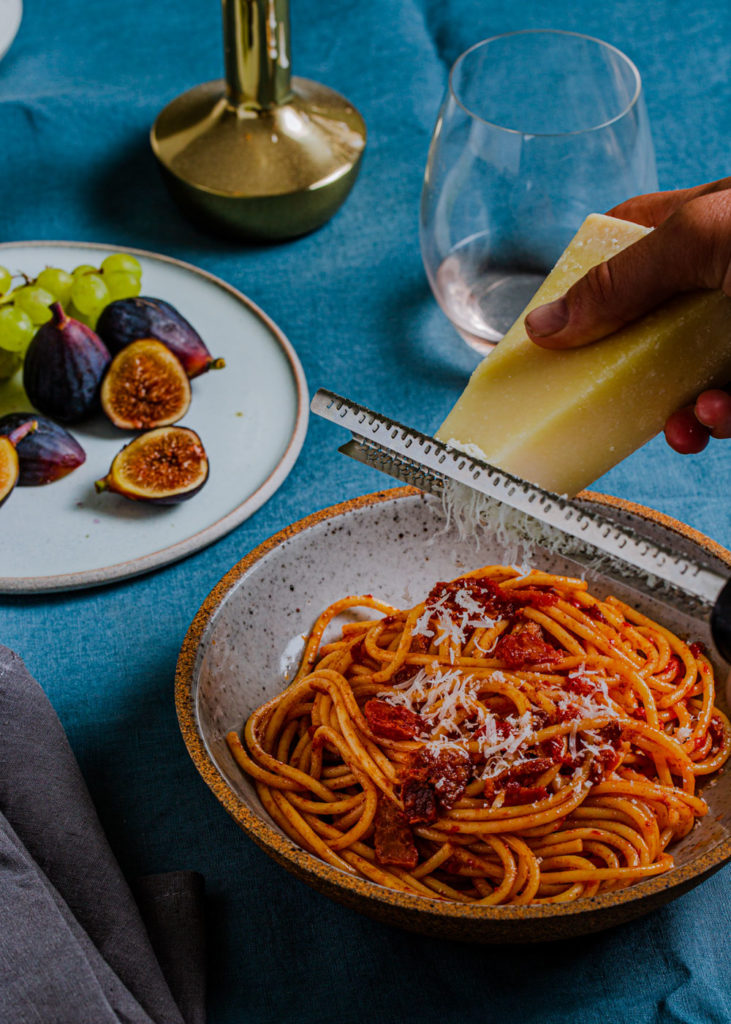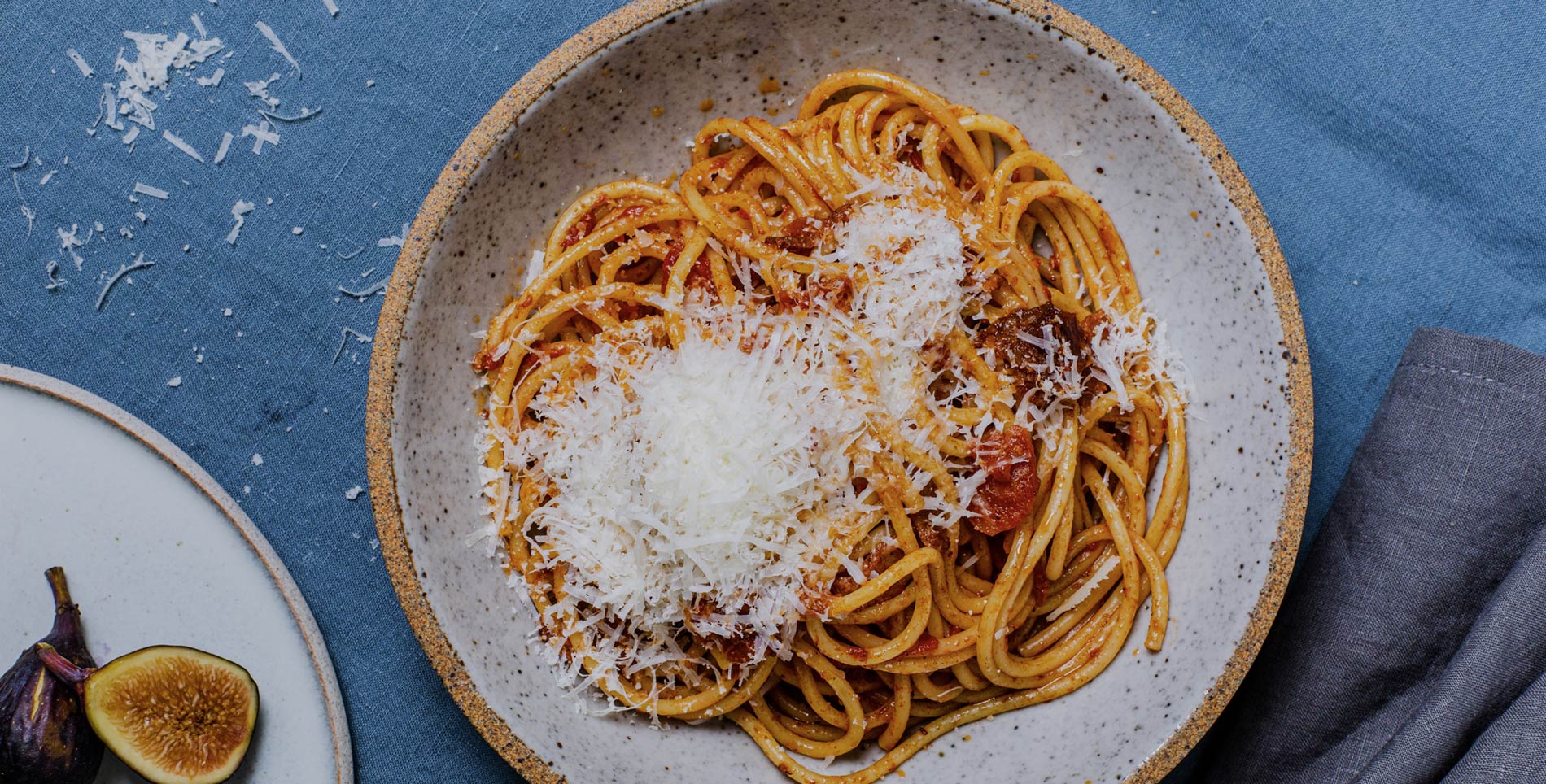When I step off the train at Stazione Termini, it is a sweltering July day. Rome is readying for its month of vacation; in August, a good part of the population leaves town to take holiday in cooler places, allowing tourists to descend on its ruins, its renowned art and architecture, its osterie and gelaterie. Even as the ancient city fills up with new visitors, history is everywhere you turn in Rome. It’s in the stones that make up the streets and form the foundations of buildings, in the manhole covers inlaid with S.P.Q.R.; it’s in the way the Coliseum rises before you and feels familiar, because though you may have never laid eyes on it, you’ve seen it countless times. It’s definitely in the traditions of its food.
And it’s hard to square all that ancient history when you step into Hotel Mediterraneo. The sensibility is an unexpected mashup of art deco details with ancient relics—busts of emperors set against repeating geometric motifs. It’s rare evidence that the city has continued to evolve and endure over the course of centuries, and is not just stuck in some long passed era. This is the setting in which I meet the hotel’s chef, Antonio Vitale.
Vitale has a born and bred Roman sensibility, but has operated kitchens in hotels all over Europe, from London to Venice to Portugal. The experience has informed his cooking, making him a specialist in cooking for a global audience, in settings that must appeal to a diverse clientele with wide ranging culinary preferences. Now that he’s returned to his home region, he balances that requirement by a desire to represent the traditional Roman canon. In recent years, the pillar pastas of Rome—gricia, cacio e pepe, carbonara and amatriciana—have spread globally with more intensity than ever. From Mediterraneo’s menu, it’s possible to order trilogia di salse romane con spaghetti romani, a sort of sampler of these dishes. But when I ask Vitale his favorite, his answer is swift: amatriciana.


I let him know it’s my favorite as well, and we begin comparing notes. Vitale leans in, offering his segreto di Amatriciana. “A little bit of balsamic,” he tells me furtively, referring to the step in which the guanciale is cooked. When I taste his dish later in the evening, I’m sold on how that small detail can be effective in deepening the flavor.
Like most Roman (and many of the most famous Italian dishes in general), amatriciana is born of cucina povera—literally, the poor kitchen. It is, by its very creation, incongruous with the setting in which I enjoy Vitale’s version. Sitting on the terrace of a meticulously restored hotel, with spritz in hand and sprawling views of the Eternal City, it’s hard to imagine those past generations and the ways in which they enjoyed the pasta. This luxury hotel, with its one-in-a-million view, and a culinary philosophy of only-the-best when it comes to ingredients, is itself a demonstration of prosperity, privilege and access.
But let’s be real. Most of us won’t get to enjoy this dish in such a setting. We may make it on the fly for a weeknight family meal. We might throw it together when we’re having unexpected company. Hell, we may even eat it cold, as leftovers for lunch at our office the next day. Our modern interpretation of the classic dish may not transport us to Rome or its namesake town of Amatrice, but it might just help us get through the day. And perhaps that is the truest representation of what motivated its creation. To understand that legacy, its ability to suit such a variety of settings and satisfy so many needs, is the true secret of amatriciana.

Recipe
A Not-So-Secret Amatriciana from Chef Antonio Vitale
Ingredients:
- 180 g. tonnarello (typical roman homemade pasta) or spaghetti
- 150 g. guanciale (cured pork jowl), or bacon (pancetta), cut into thick slices
- 1 tbsp. balsamic vinegar
- 300 g. canned, peeled tomatoes, chopped small
- 100 g. of grated pecorino romano sheep’s cheese
- A drizzle of extra virgin olive oil
- Pinch of salt
Method:
For a good amatriciana pasta choose a quality cured pork jowl. It must have a very white fat, remove the rind, if you have it, and cut it into strips. Heat the oil in a large pan, then add the cured pork jowl and sauté over low heat for 2 or 3 minutes, until it is golden and the fat has become transparent. Pay close attention to the browning of the cured pork jowl, which is essential for the success of the recipe. If it is not well cooked it will be unpleasant to taste, but it takes a moment because it burns.
As soon as the fat is transparent, pour balsamic vinegar and let it evaporate. Then drain the cured pork jowl and set it aside. Add the tomato to the pan, add salt, and cook covered for about 15 to 20 minutes over medium heat. Meanwhile, boil the pasta per the package directions.
When the sauce of the amatriciana has thickened, put back the guanciale and a spoon of grated pecorino. Mix well. Drain the pasta “al dente” and combine with the amatriciana sauce.
Serve the amatriciana pasta sprinkled with plenty of grated pecorino.







Our comments section is for members only.
Join today to gain exclusive access.